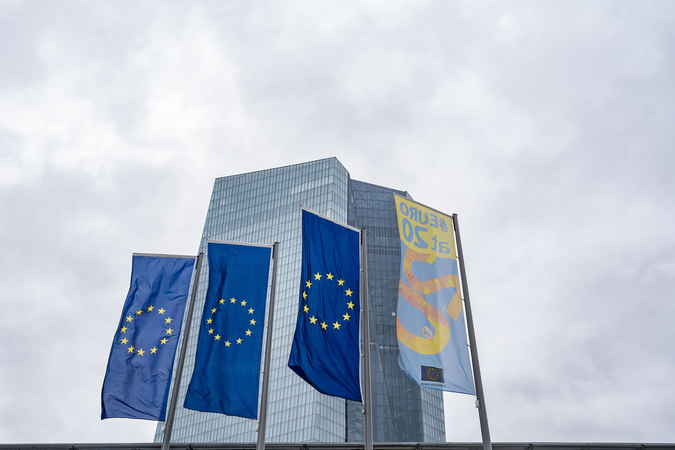Europe posts its warmest January on record

Europe just concluded its warmest January on record, coming on the heels of a toasty December and making the 2019-2020 winter season a contender for the warmest Europe has observed. Although the calendar has flipped to a new decade, there has been no slowing in the growing list of locations experiencing record temperatures amid a quickly warming climate.
The European Union's Copernicus Climate Change Service announced Tuesday morning that January 2020 was Europe's warmest January on record, edging out previous record holder January 2007 by 0.36 degrees.
The month was a staggering 5.6 degrees above the 1981 to 2010 baseline of "average" January temperatures across the European continent as a whole, with much of northeastern Europe surpassing benchmark values by nearly 11 degrees.
It was also Earth's warmest January on record, essentially tying with January 2016. Technically, January 2020 was a hair - 0.054 degrees - warmer.
Helsinki, the capital of Finland, made it above freezing every day in January - bizarre, considering its average January high is only 30 degrees (minus-1.1 Celsius). The typical January morning low? Twenty degrees (minus-6.7 Celsius).
But not this year. Only seven hours since the start of the year have been below 20 degrees, the month briefly dipping to 17.6 degrees (minus-8 Celsius) on Jan. 10. In contrast, some 723.5 hours have climbed above 30 degrees, a 103-to-1 ratio.
"The lack of snow and the warmth is really unheard of," wrote Mika Rantanen, a research meteorologist at the Finnish Meteorological Institute, in a Twitter direct message. "Monthly records were not just broken, they were shattered with large margins."
Helsinki wasn't the only Scandinavian city to see temperatures rise above freezing every day. So did Oslo, Stockholm and Copenhagen. And according to Rantanen, all but Oslo were totally snow-free. Scant snowfall, in many places replaced with rain, also contributed to the ever-present imagery of a rapidly warming climate.
Oslo recorded a little more than an inch of snow on the final day of January.
"In our capital city Helsinki the month was first January without snow on record," he wrote. Records there date to 1845.
Helsinki should be reaching its coldest point in the year, which ordinarily occurs toward the end of January into February. Instead, January was about 12 to 13 degrees (6.7 to 7.2 Celsius) warmer than the 1980 to 2010 average in southern Finland, according to Rantanen.
"The warmth and snowlessness in southern Finland was something which we haven't experienced before. January 2020 was very extraordinary in Finland," he wrote.
Neighboring Sweden's ski industry is suffering. Not only has much of the existing snow melted, but with nighttime lows struggling to fall much below 32 degrees (0 Celsius), it's been a challenge even to make artificial snow.
The anomalous warmth has even helped cherry trees in Sweden bloom early, opening their buds to reveal springlike flowers in the heart of winter. According to Sweden's the Local, temperatures soared to 51 degrees (10.6 Celsius) in Orebro on Jan. 9, marking the hottest January day there since 1858.
The heat wasn't confined just to Europe. "Temperatures were also much above average over most of the USA and eastern Canada, over Japan and parts of eastern China and Southeast Asia, over the state of New South Wales in Australia and over parts of Antarctica," according to Copernicus. The entirety of Russia was anomalously toasty as well.
The zone from Scandinavia to western Russia has endured some of the most anomalous warmth, with many areas seeing temperatures averaging 10 to 15 degrees (5.5 to 8.3 Celsius) above normal since Jan. 1.
Moscow logged its warmest January on record, too. Records there extend nearly two centuries. "[T]he average January temperature in the Russian capital is in positive territory - at plus 0.1 degrees [Celsius] - for the first time ever," reported the Moscow Times. Temperatures there have averaged 13.3 degrees (7.4 Celsius) above normal.
The margin by which this year surpassed previous record values is in some cases mind-boggling. January's average temperature in Moscow in 2020 exceeded the previous record holder by an unusually large margin of nearly 2 degrees Fahrenheit.
The mild January comes just after Moscow's warmest December on record, during which the city was reportedly forced to truck in fake snow for New Year's celebrations.
What's to blame for these toasty temperatures?
"I think it has been the positive [North Atlantic and Arctic oscillations] that has been the dominant reason," Rantanen wrote, "but climate change has of course contributed to the warmth."
When the North Atlantic and Arctic oscillations are positive, frigid air and the polar vortex remain confined over the Arctic. Computer models project the indexes to remain strongly positive into mid-February, meaning a likely continuation of milder-than-normal conditions.
The same weather pattern resulted in a mild January over much of the United States, where temperatures are also expected to remain above normal for the first part of February.
In Europe, if this pattern does not break, this winter will probably go down as the region's warmest in recorded history. It's another puzzle piece that's slowly but surely filling in the picture of our environment heating up. And that won't change any time soon.
